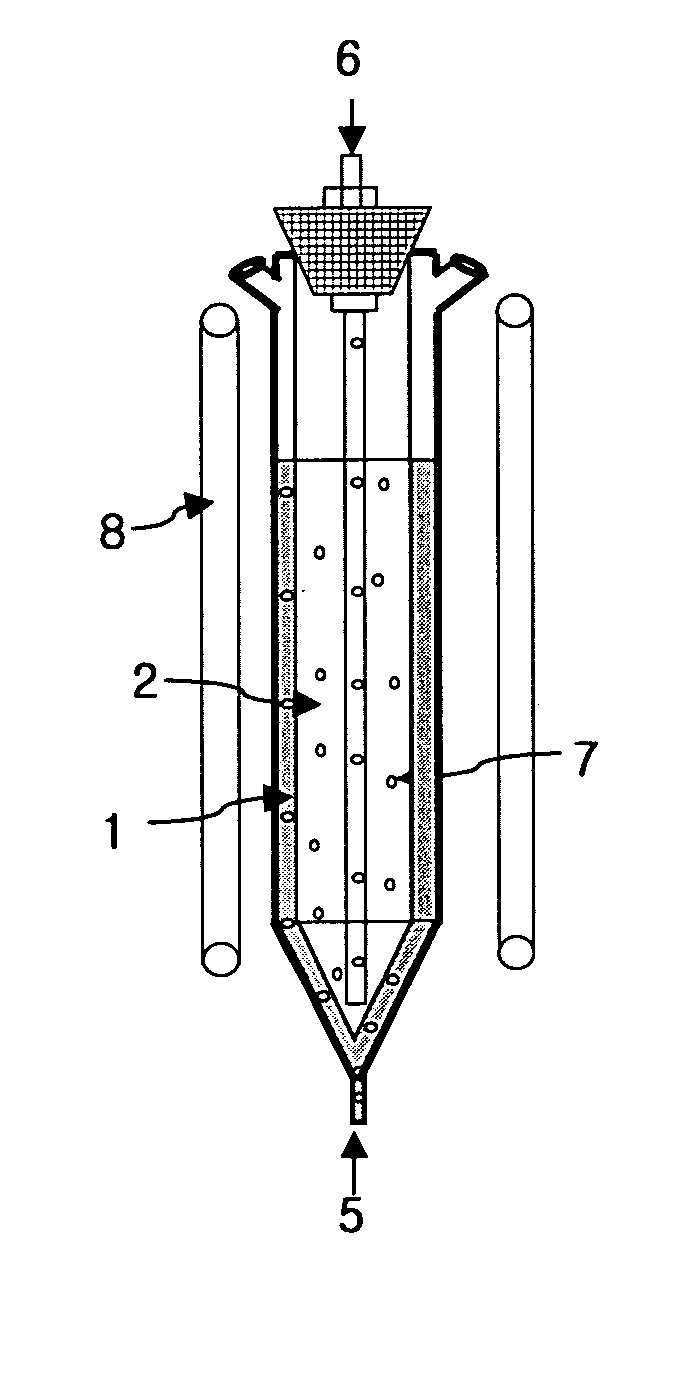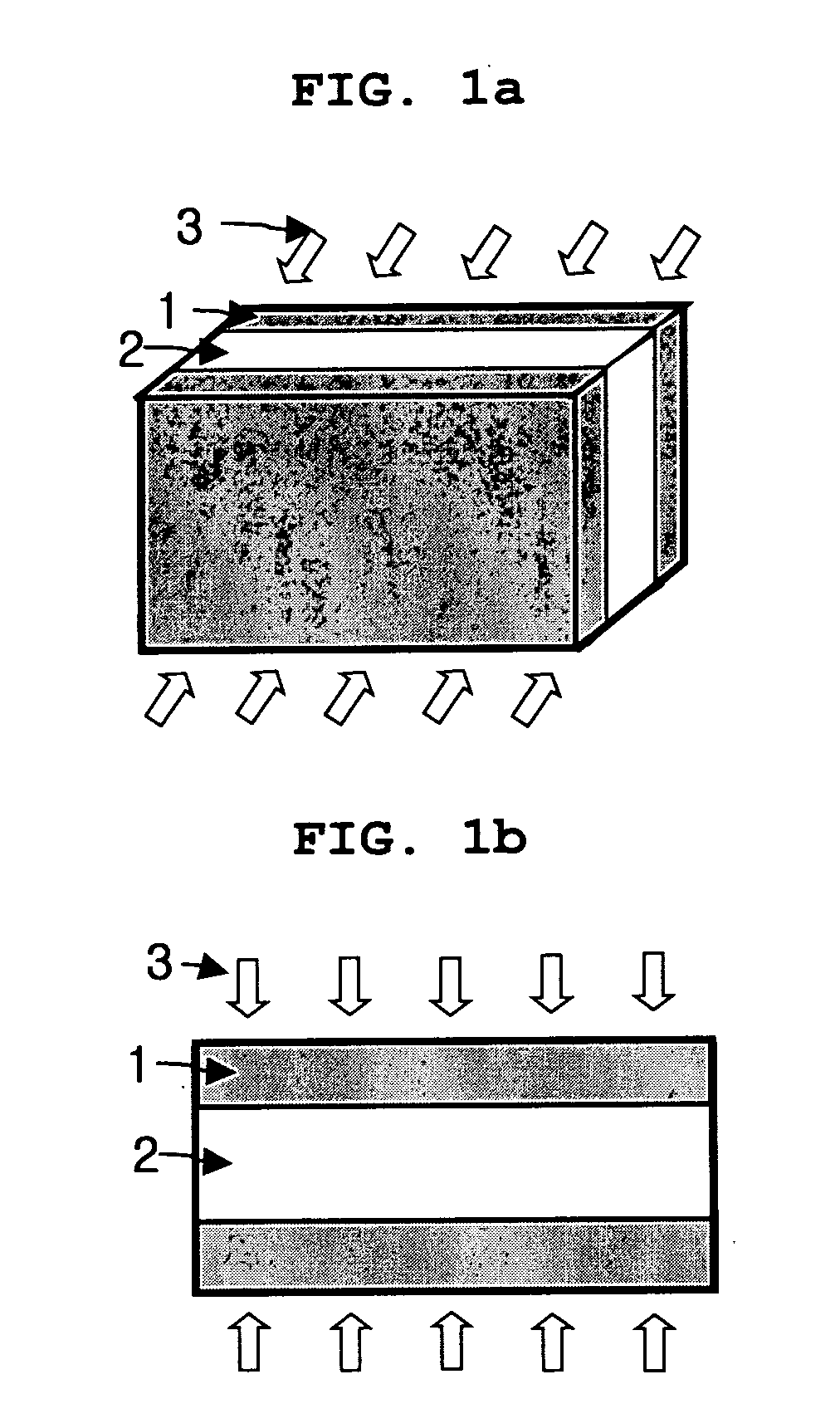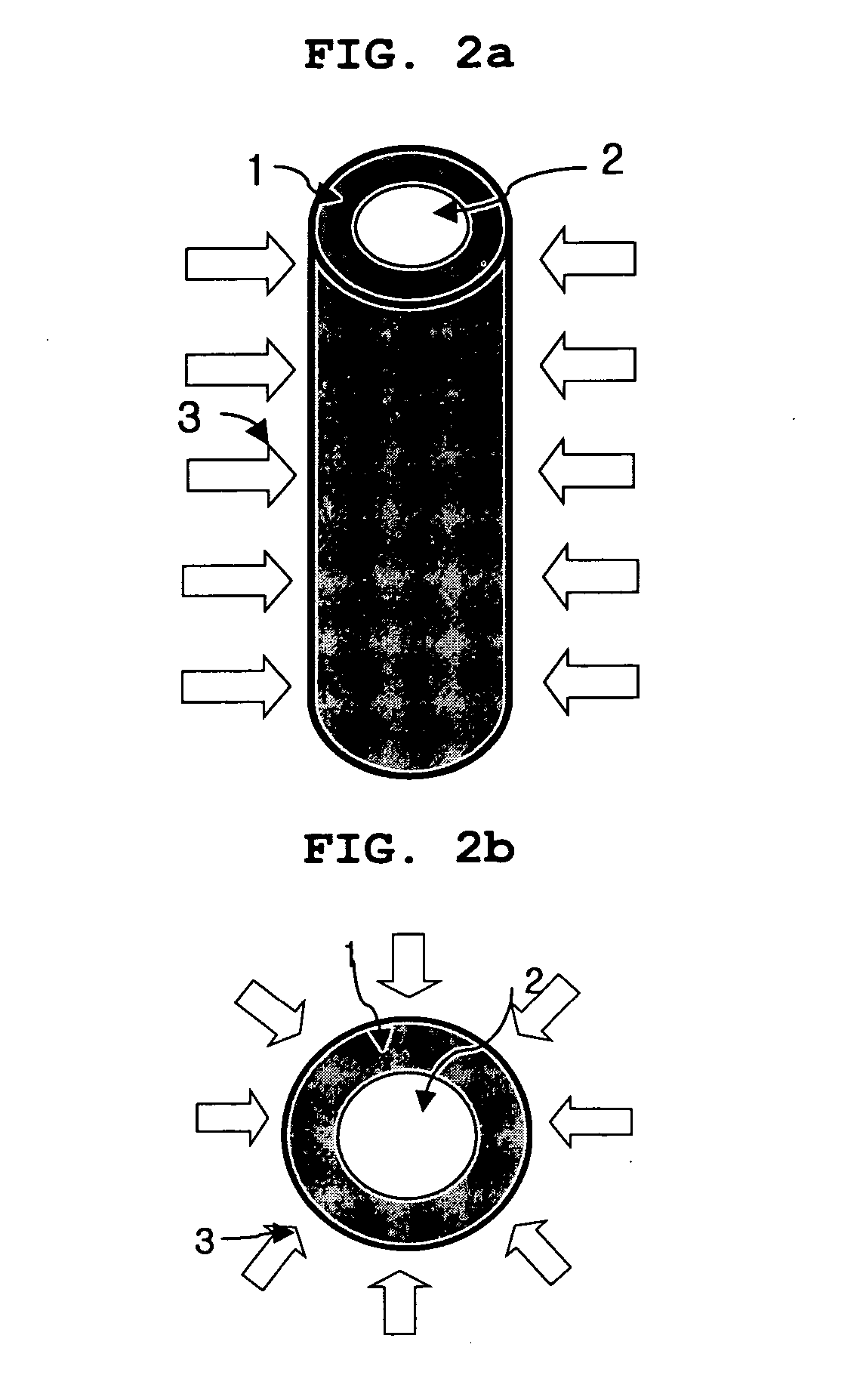Multi-layered photobioreactor and method of culturing photosynthetic microorganisms using the same
a photobioreactor and microorganism technology, applied in bioreactors/fermenters, microorganisms, biomass after-treatment, etc., can solve the problems of high labor and energy requirements, high land cost or installation cost, high operation cost, etc., and achieve the effect of reducing labor and energy requirements
- Summary
- Abstract
- Description
- Claims
- Application Information
AI Technical Summary
Benefits of technology
Problems solved by technology
Method used
Image
Examples
example 1
Culturing of a Photosynthetic Microorganism
[0077] In this test, a double-layered upright-cylindrical air-lift photobioreactor, as shown in FIGS. 12a and 12b, was used, to which the gas was injected through its lower part. The light was supplied to the photobioreactor, which was emitted from an illuminant 8 installed at the exterior of the upright cylinder. A second culture region 1 to produce a useful metabolite was formed at the outer jacket region to be directly exposed to the light. A first culture region 2 to execute the vegetative cell growth was positioned at the inner core region of the second culture region. The air-lift photobioreactor was composed of an outer jacket of a capacity of 700 ml and an inner core having a capacity of 700 ml.
[0078] An aerator was installed at the lower part of each culture region. Gas supply apparatuses 5 and 6 upwardly supplied the gas to the second and first culture regions, respectively, leading to an upward flow of the culture medium. Linea...
experimental example 1
[0085] When a photosynthetic microorganism was cultured according to steps 1 and 2 of the batch culture of the present invention, fresh cell weights and astaxanthin levels were measured.
[0086] In this test, the double-layered upright-cylindrical air-lift photobioreactor of Example 1 was used, wherein gas was injected through the lower part of the photobioreactor (see, FIGS. 12a and 12b).
[0087]Haematococcus pluvialis UTEX16 was used as a photosynthetic microorganism, which produces a high-value metabolite, astaxanthin ((3S,3′S)-3,3′-dihydroxy- , -carotene-4,4′-dione). The H. pluvialis strain was grown in MBBM (Modified Bold's Basal Medium).
[0088] The surface intensity of the outer jacket region of the photobioreactor was maintained at 80 μmol / m2 / s. The H. pluvialis strain UTEX16 was injected to the outer jacket and inner core regions at a density of 1.2×104 cells / ml.
[0089] In order to upwardly flow the culture fluid, mix the culture medium and supply a carbon source, gas containi...
experimental example 2
[0093] When a photosynthetic microorganism was cultured using a different type of the photobioreactor of the present invention, cell concentrations and astaxanthin levels were measured.
[0094] In this test, a double-layered upright-cylindrical air-lift photobioreactor, as shown in FIGS. 13a and 13d, was used. Gas was injected to the photobioreactor through its lower and upper parts. The photobioreactor, as an embodiment of the photobioreactor of the present invention, is a double-layered upright-cylinder type with an external irradiation. In the same manner as in the photobioreactor of FIGS. 12a and 12b, the photobioreactor used in this test had an internal region composed of an upright-cylindrical outer jacket corresponding to the second culture region 1 to produce a useful metabolite and an inner core corresponding to the first culture region 2 to execute the vegetative cell growth. The light energy was supplied by linear fluorescent lamps 8 installed in the exterior of the uprigh...
PUM
| Property | Measurement | Unit |
|---|---|---|
| cell density | aaaaa | aaaaa |
| size | aaaaa | aaaaa |
| concentration | aaaaa | aaaaa |
Abstract
Description
Claims
Application Information
 Login to View More
Login to View More - R&D
- Intellectual Property
- Life Sciences
- Materials
- Tech Scout
- Unparalleled Data Quality
- Higher Quality Content
- 60% Fewer Hallucinations
Browse by: Latest US Patents, China's latest patents, Technical Efficacy Thesaurus, Application Domain, Technology Topic, Popular Technical Reports.
© 2025 PatSnap. All rights reserved.Legal|Privacy policy|Modern Slavery Act Transparency Statement|Sitemap|About US| Contact US: help@patsnap.com



